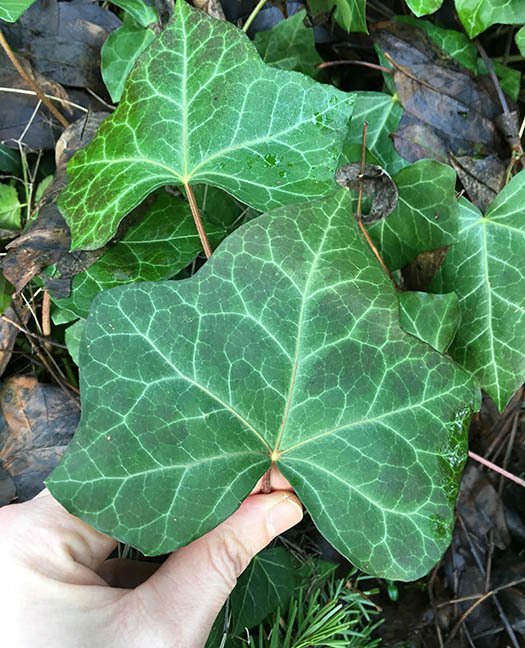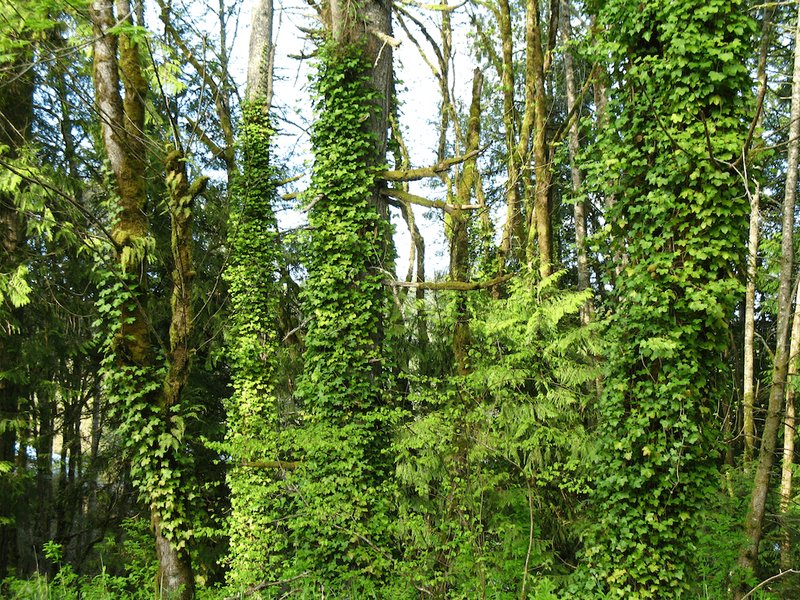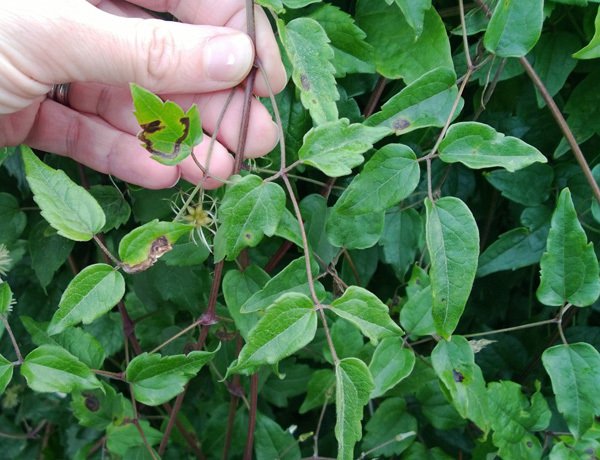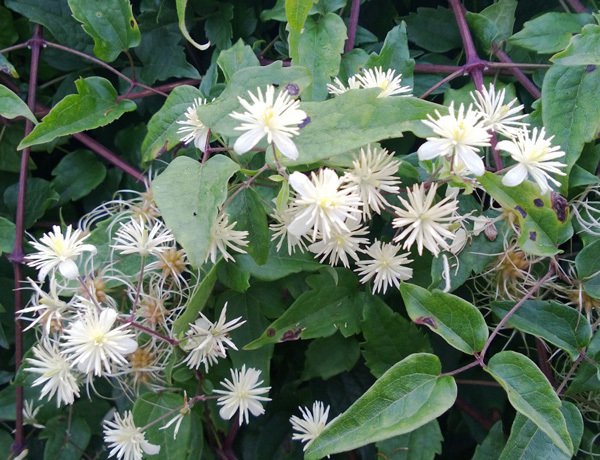Enlgish Ivy & Old Man's Beard
Hedera helix & Clematis vitalba




English Ivy - Evergreen, perennial vine that can grow up trees and bushes or spread freely along the ground. Can grow 99 feet and the young plants can anchor to vertical surfaces.
Leaves: Dark green, waxy leaves that are alternate along the stem. Young leaves are deeply lobed while older leaves are diamond to oval shaped.
Flowers: Flowers bloom from May-June. Only older plants flower and that can take up to 10 years. The flowers are greenish white and form umbrella-like clusters.
Habitat: Commonly found in woodlands, forest edges, riparian areas, fields, hedgerows, coastal areas, and disturbed habitats. Also commonly found in yards growing on slopes or trees.
Weed Classification: C
Why is it a Noxious Weed?
Ivy spreads fast and takes over ground cover and trees. It will kill vegetation on the ground and will eventually kill trees, as well.
Old Man's Beard - A deciduous, perennial, climbing vine that can reach about 66 feet in length.
Leaves: Leaves are opposite on the stem and are pinnately compounded into 5 leaflets. Leaflets have small hairs along the leaf vein, on the underside.
Flowers: Flowers bloom from June-December. Flower clusters grow where the leaf meets the stem and stem tips. Flowers are white with no true petals, but it has petal-like sepals.
Habitat: Found in forest lands, forest edges and openings, riparian areas, waste areas, roadsides, and coastal lands.
Weed Classification: C
Why is it a Noxious weed?
This plant grows rapidly and aggressively and kills ground vegetation, along with shrubs and trees.
If you have either of these two and need any help with control recommendations or identification, please let us know!
Control Recommendations:
WA State Noxious Weed Control Board - English Ivy
WA State Noxious Weed Control Board - Old Man's Beard
